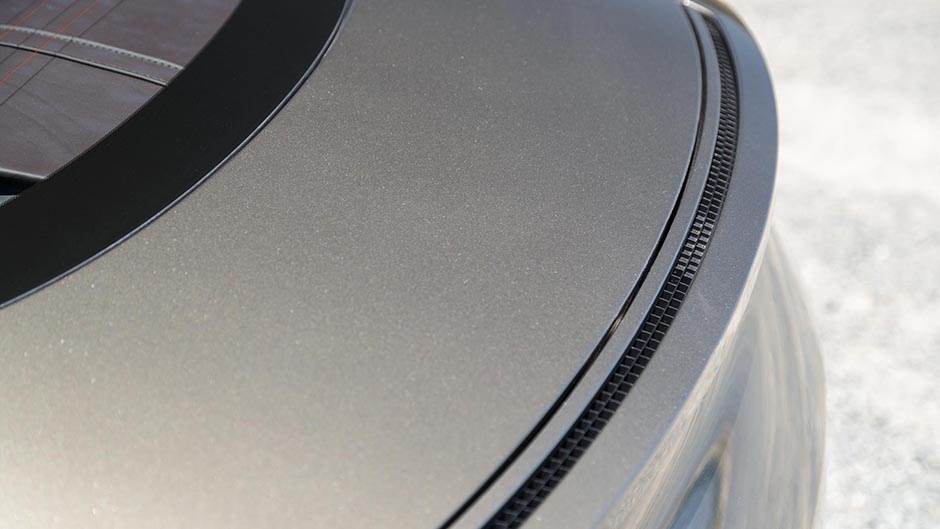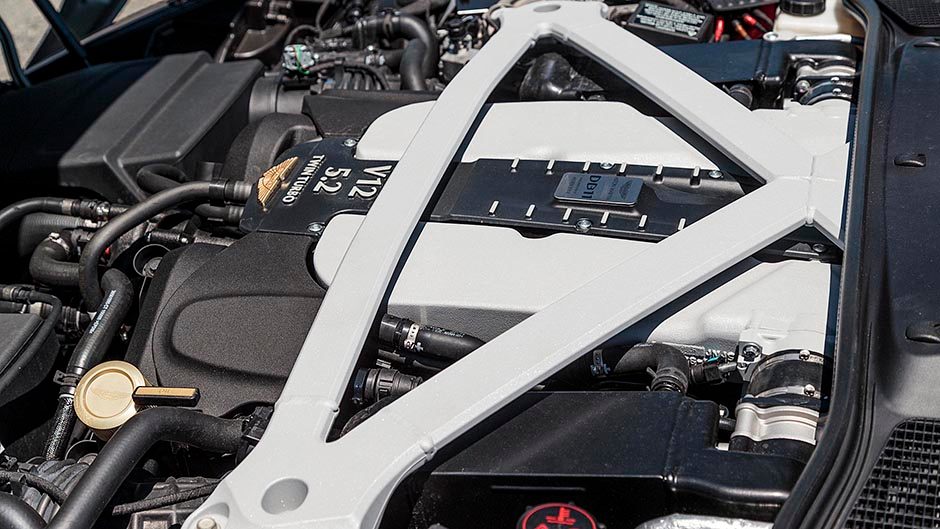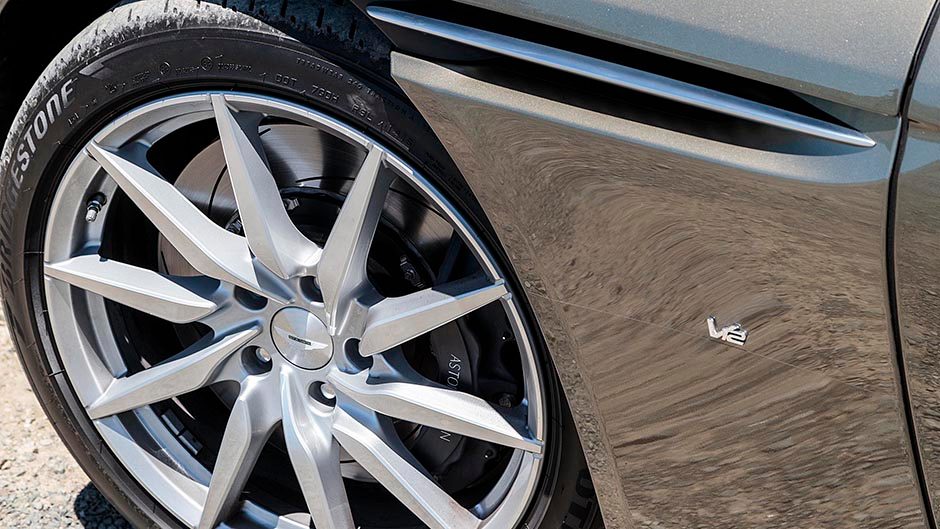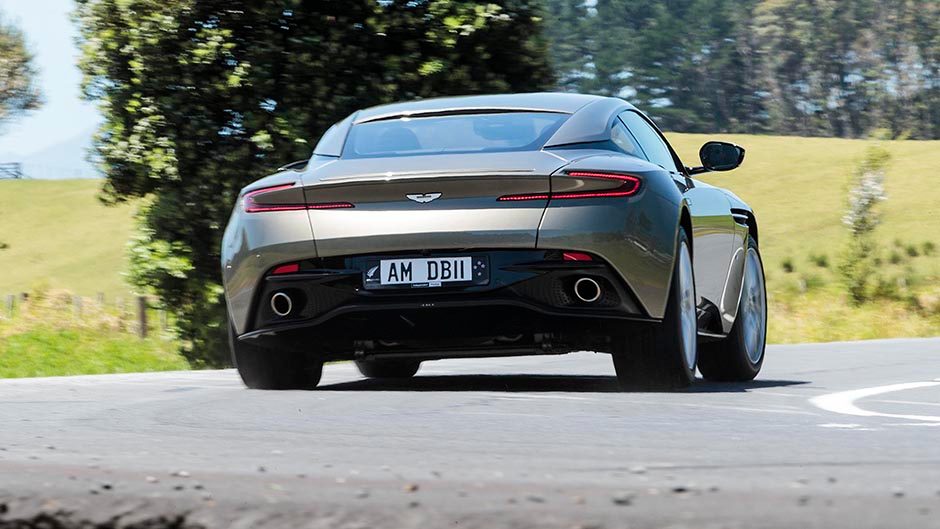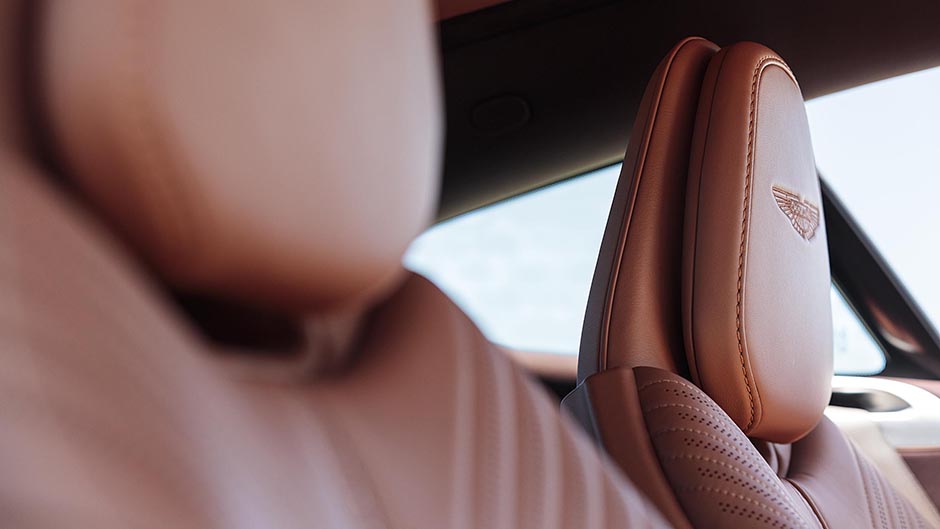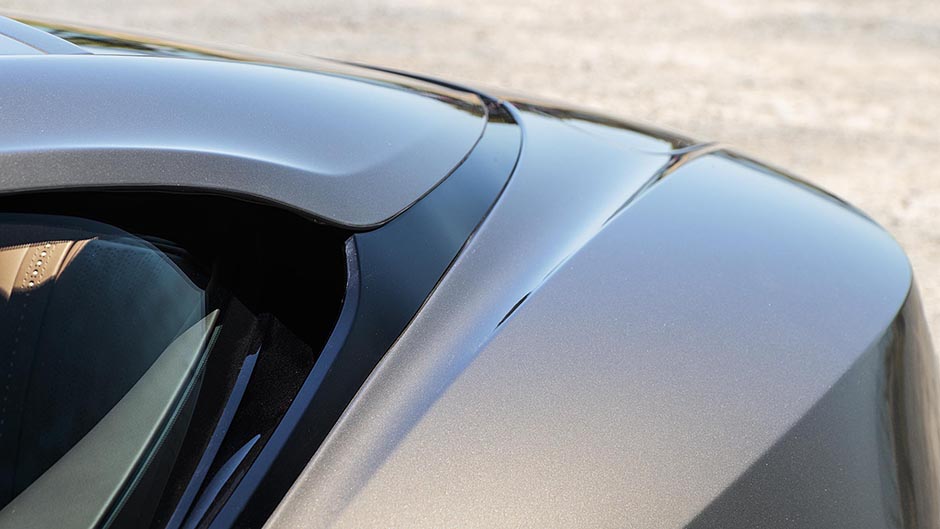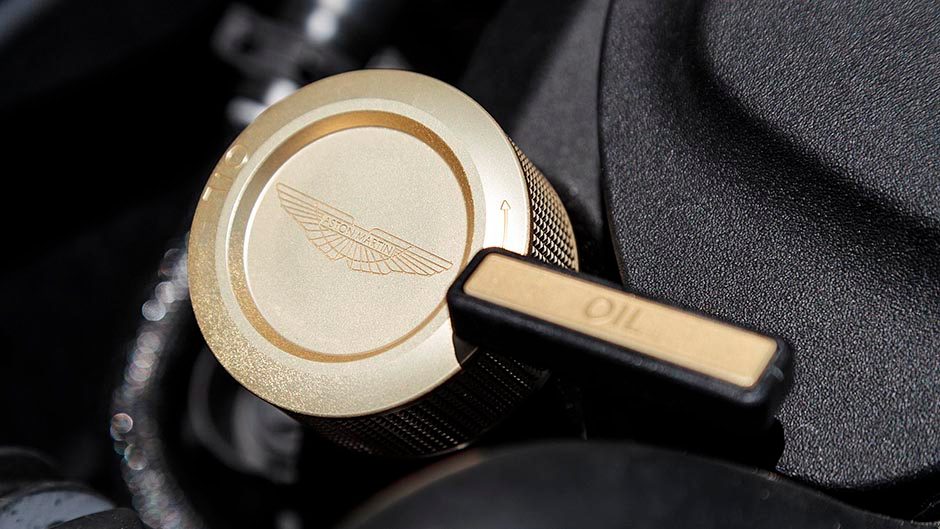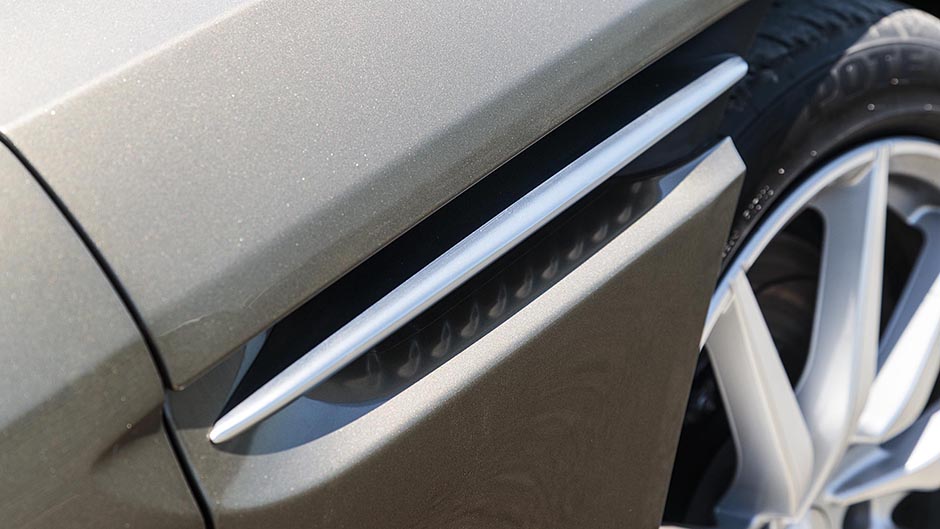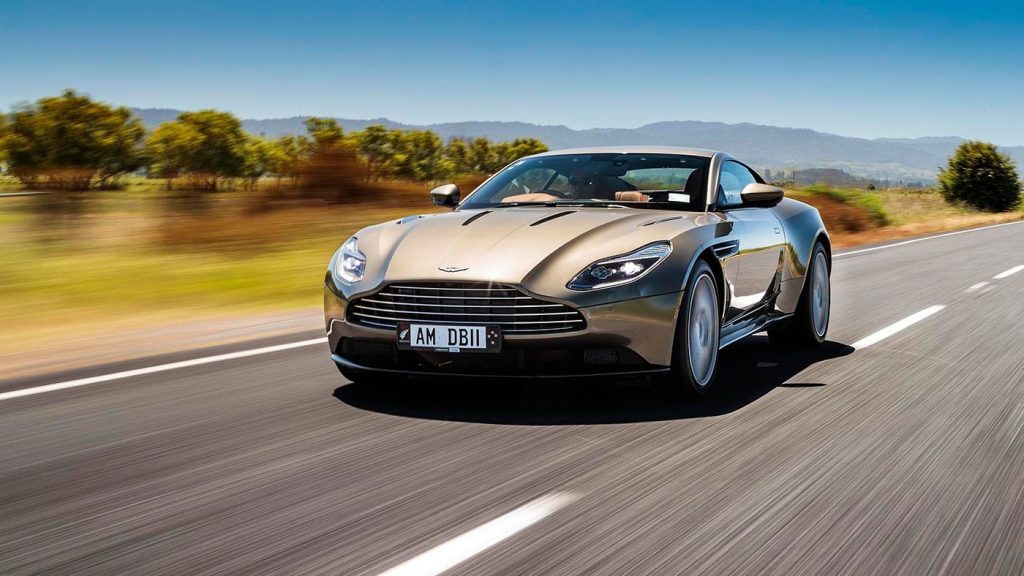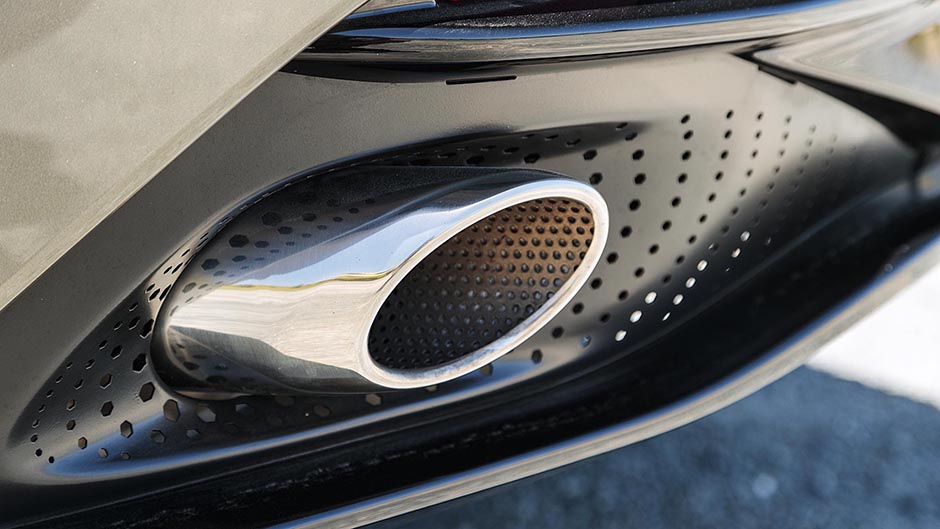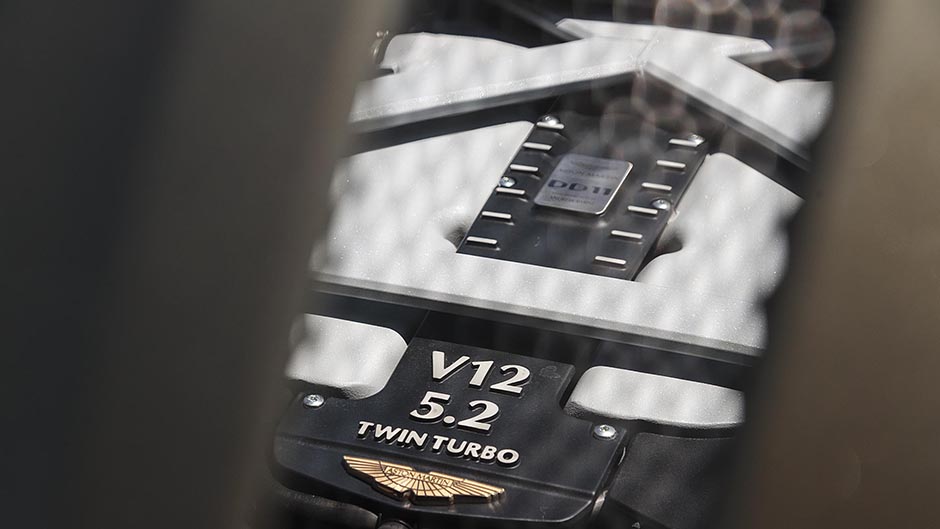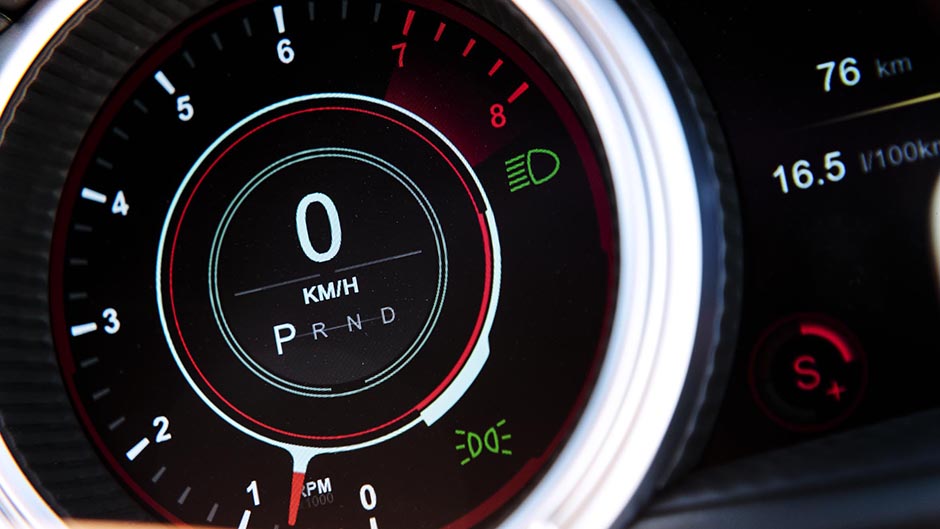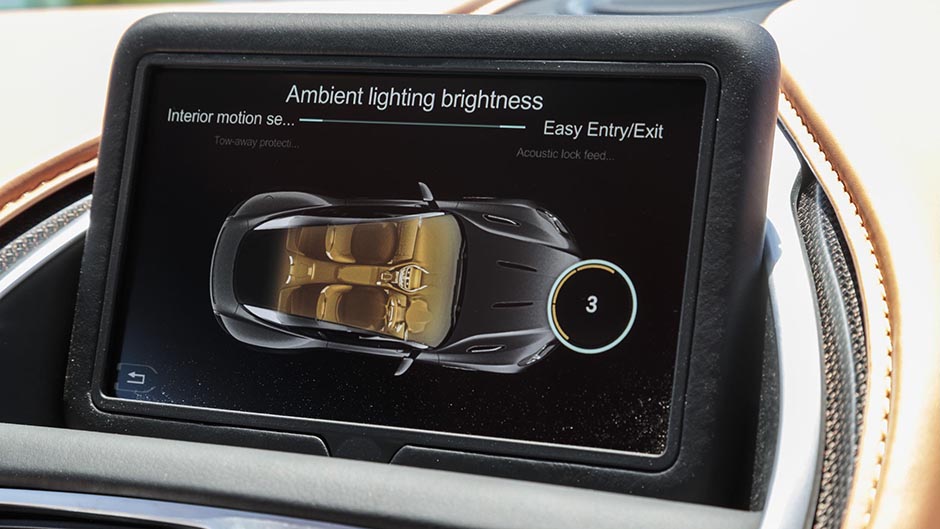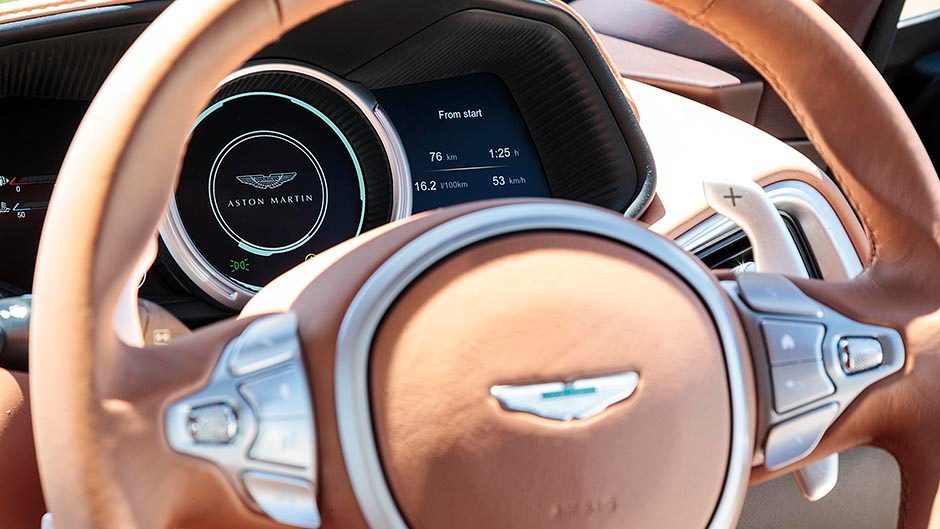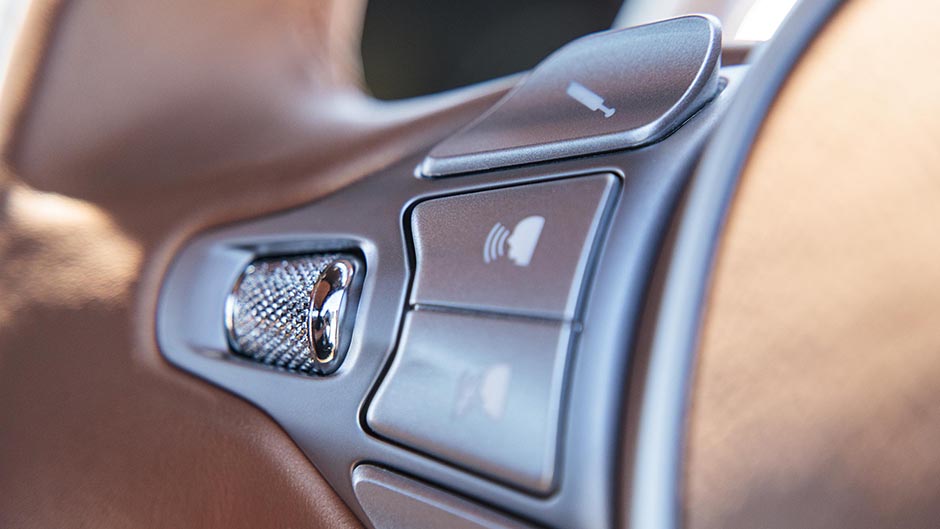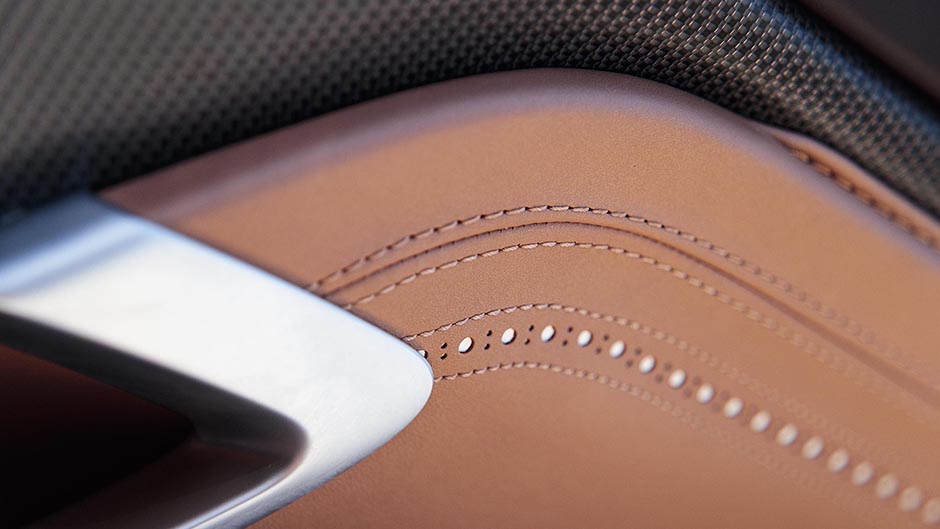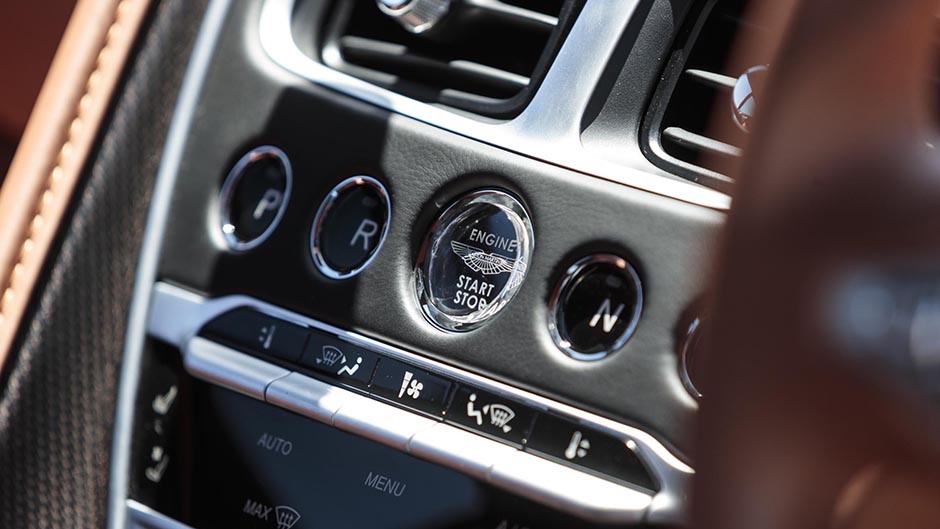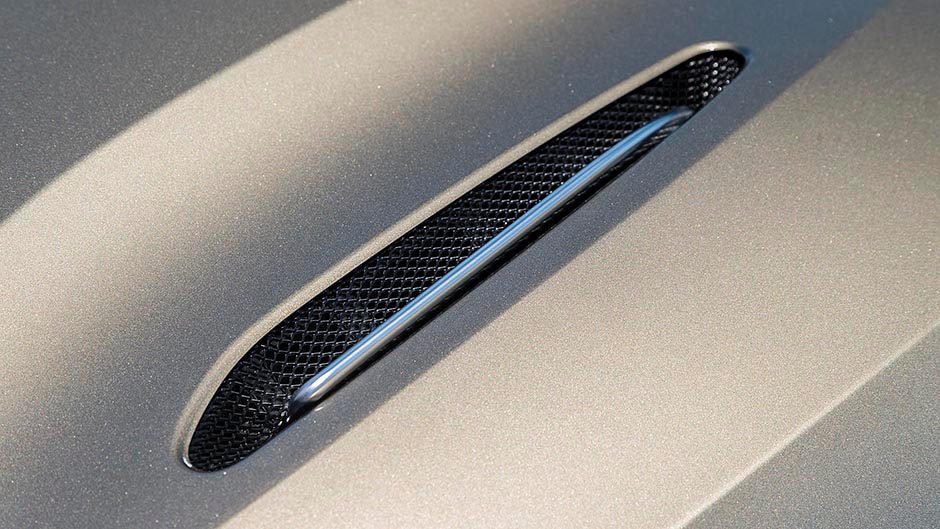2017 Aston Martin DB11 review
Words: Kyle Cassidy | Photos: Tom Gasnier
Aston Martin’s revival begins here with the DB11, a modern grand tourer in the finest tradition.
Not often is how frequently we get to experience a new Aston Martin, while a truly all-new Aston is a rare beastie. This DB11 is the first genuinely new car the company has crafted in more than a decade, 13 years in fact. It was 2003 when the company rolled out the DB9 riding on it’s new aluminium VH architecture, and every car since has used this as a foundation. That those cars have managed to remain competitive in the cut-throat world of luxury sports cars, where buyers move quickly to the latest and greatest, says much for that original design ethos. And so the new range of cars, which starts with the DB11, again uses the same philosophy or, as Aston likes to say, an evolution of an established blueprint.
The chassis uses a mix of bonded aluminium pressings, extrusions and castings but Aston reckons its new creation is lighter, stronger, and repackaged to benefit interior space. The DB11 is a larger car than the DB9, wheelbase up by 65mm, tracks out 75mm in front and 43mm in the rear while overall width increases by 28mm. The overhangs have been reduced and length increased by 50mm.
Rejigged dimensions evidently improve the balance, the V12 now sitting further back and, along with a repackaged fuel tank, transaxle and multilink rear suspension, interior space improves. You can now shoehorn a person, just, in the rear seat, though neither passenger will be comfy, the front seat needing to be positioned right the way forward. And so the rear seats remain occasional, or for the shopping. Still it’s an improvement, and the boot too is bigger, wider, though not awfully long or voluminous. Aston can always sell you a set of fitted luggage to suit.
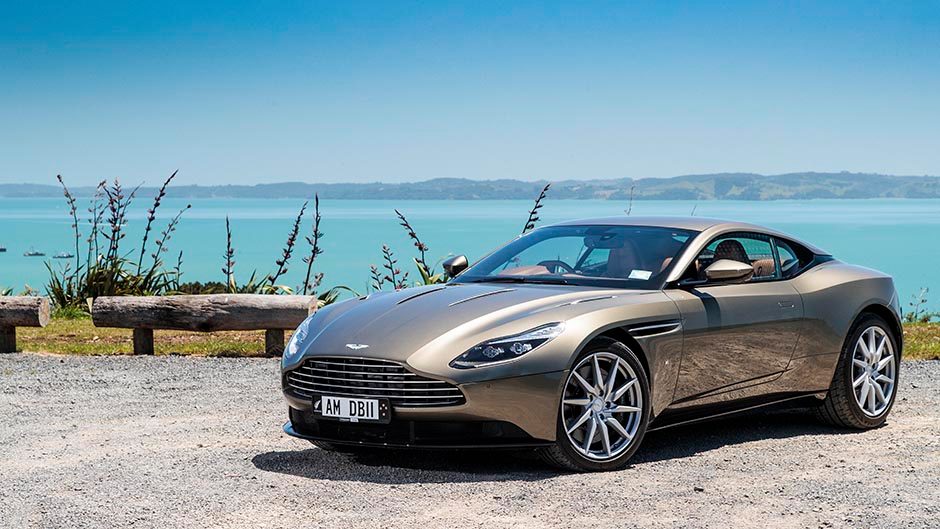
It’s now easier to board this jet, bigger doors swing up and out thanks to their trick hinges but they are still not so great in tight spaces. While the styling of the car, which we will get to, is something else, even more remarkable is the interior. It’s a lavish environment to both the visual and somatic senses; the extensive leather work fussed over with ornate quilting and brogueing while the finish and quality are much improved. We still remember the globs of glue present on the headlining of the first DB9, and how then-editor Owen managed to push one of the gear shift buttons right through the dash. These are still sited there, somewhat awkwardly in the DB11 but, like the rest of the switchgear, are better made.
The design of the dash, centre stack and console gel, even managing to integrate the big central screen of the new infotainment system cohesively. This comes via Daimler AG, as does the new 12-inch display in the instrument binnacle. While these and other bits are recognisable from various Benzs, it does mean the DB11 gains functional sat nav and other convenience items that have been sorely lacking, like a 360-degree camera system and even a smart key. Pity there’s no active safety gizmos what so ever, not even AEB. We liked the crafted charm of the abundant leather, the tan hue managing to work with the carbon inlays, though there are multiple combinations to be had and a vast options list. The heavy pile floor mats are a must as the carpet is hardly plush.
But that’s only an appetiser to the real delights. Let’s not forget the auditory pleasures courtesy of the new 445kW V12. Where a boosted V8 would have sufficed, excess still reigns for this GT. A V8 by-the-by will feature in the next Aston, the Vantage replacement, courtesy of Mercedes-AMG, and it’s due next year. In 2018, expect a top-flight Vanquish replacement with an even more potent V12, followed by a high-riding crossover, a big luxo barge wearing the Lagonda badge and an EV sedan too. Aston is going to be busy.
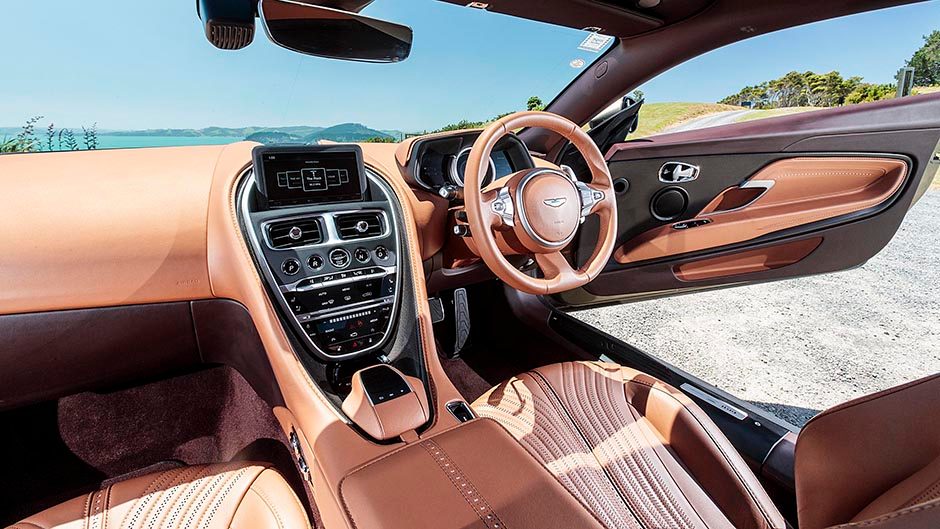
The V12 has been de-stroked but the torque stocks are well replenished with a turbo bolted to each cylinder bank. The mixture is still squirted through the ports but 700Nm of torque suffices, and to show they at least care about fuel reserves the V12 has cylinder deactivation, each bank of six cylinders taking it in turn to shut off, which ensures the cats in the exhaust stay hot enough to remain effective. Stop/start even makes the list but fuel use is still voracious, ranging from mid-teens into the high twenties. The result of that gas use is an engine note that still gratifies – it’s powerfully dignified – and is free of any synthesisers.
While it trumpets its excess on start-up, Aston has added a quiet start mode for when you’d rather everyone didn’t look over to see what all the fuss was about. The transmission remains an eight-speed auto, and adaptive Bilsteins again make the grade, while torque vectoring via brakes is new. The steel rotors are sizeable, as are the bespoke Bridgestone S007 ‘license to thrill’ treads.
And then there’s the look, modern yet recognisable. The form is both beautiful and functional. That slash on the front quarter panel, known as the Curlicue, hides a vent which allows the air pressure to escape from the wheel arch, reducing front end lift while the solution to curtail its effect at the rear is even more elegant. Air is channeled into an intake below the C pillar which then flows through the body to depart through the slit on the rear deck. This ‘Aeroblade’ negates the need for any style-corrupting appendage on the rear end.
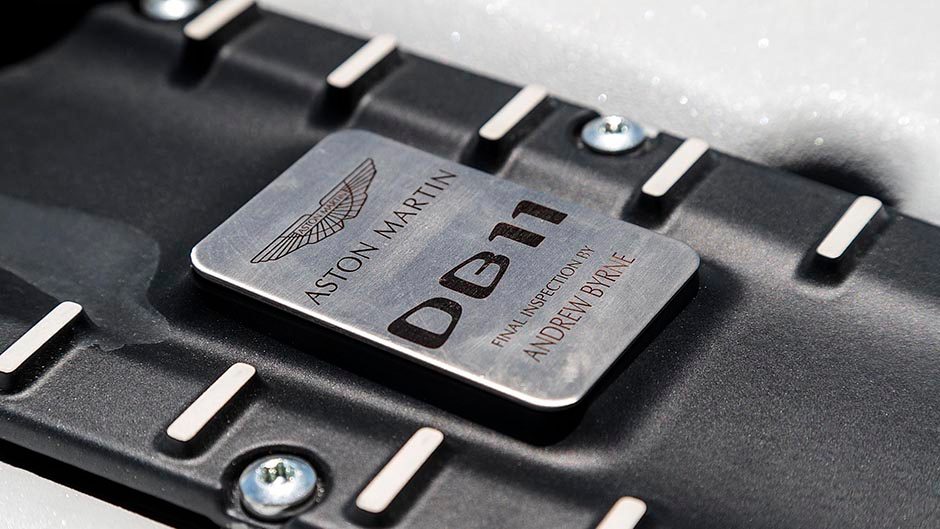
As a GT the DB11 certainly fits the bill; it’s comfortable, quick and capable. But if you want an Aston sportscar, best wait for the Vantage next year. There are two wheel-mounted buttons worth pushing; one alters the state of the dampers, the other amps up the powertrain. Everything is relaxed in GT mode, your progress saloon-like almost, and with the V12 and auto set to chill, town and motorway running are handled easily. Head off cross country and there’s a fair degree of sponge to the ride, while the engine response is drowsy. Remedy this by notching things up to Sport mode where the powertrain becomes keener, so too the dampers, yet still they remain rather pliant.
As speeds rise, there’s still a surprising degree of movement, particularly in the rear that doesn’t really settle until you set the dampers to full Sport Plus mode. And even then, the ride remains civil. When pressing on, one needs to remember its GT billing, yet the DB11 has particularly impressive balance and grip, especially when considering the weight; at 1885kg, it’s a heavy hitter, porkier even than the old DB9 (1768kg). Still, it’s lithe next to the Conti GT.
The steering is remarkably light on weight, but it’s quick and with just enough feedback to suffice without making life too busy at the helm. It gets the front tucked in easily, though usually a dab on the brakes to settle things pre-bend helps as the substantial footprint goes to work, planting the DB11 nicely before the V12 steps up. There’s mumbo from low down, but things enliven as it sweeps past 3000rpm, revving smoothly, unfussed but quickly. The throttle response is keen, lag not really an issue, and it keeps on delivering its stupendous urge as it rips round to its 7000rpm limit. Off the leash, it charges furiously with a barrage of noise from the exhaust with the flaps open.
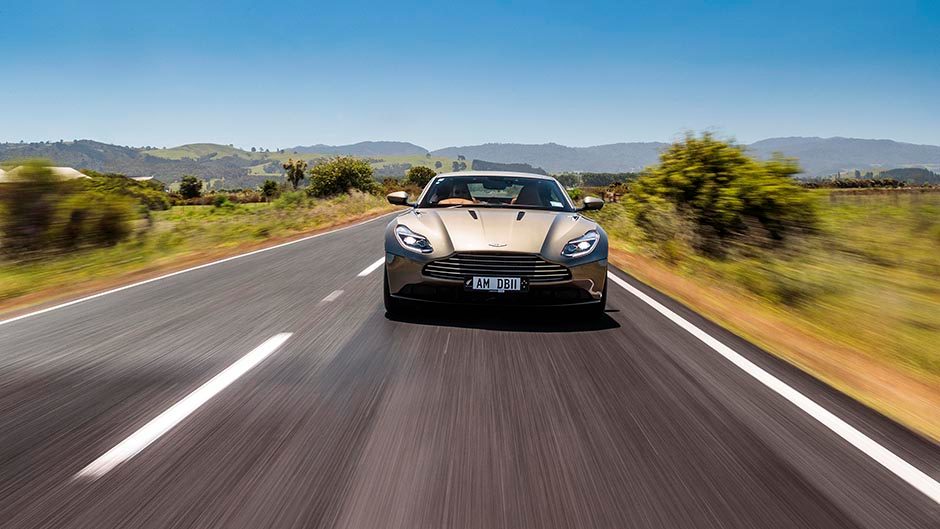
We’re glad to report the tyre roar doesn’t dominate; there is road noise, but it’s not excessive. Given the shapely nature of the gear paddles, and that neither auto mode really satisfied (the odd down shift when powering out of bends unnerving) we decided to pull the gears ourselves, upshifts around the 5500rpm mark supplying sufficient go, with the transitions snappy but never snatchy. Though torque vectoring features, its effects weren’t apparent, which is as it should be. The traction control isn’t overly eager as long as you’re smooth on the gas, and patient when required as it sure doesn’t have the unflappable traction of an AWD machine.
Slipping back into a GT manner of driving, the DB11 mops up miles and most road nasties with ease, dawdlers dispatched with a minor extension of the foot. It’s very rapid over the 80-120km/h run at just over two seconds but we failed to locate the launch mode for the car, hence the standing run to 100 was shy of the sub four second claim, but it will run 4.3sec easily.
While the one percenters who make up the pool of customers don’t really need to justify such purchases, if they did you could forgive them for buying the DB11 on looks alone; it’s stunning. It could be for the engine, the interior, or the effortless way the DB11 goes about munching miles. Whatever the reason, if you’ve hankered for a proper and exclusive GT, look here first.
| Model | Aston Martin DB11 | Price | $340,000 |
| Engine | 5204cc, V12, T/EFI, 447kW/700Nm | Drivetrain | 8-speed auto, rear-wheel drive |
| Fuel Use | 11.4L/100km | C02 Output | 265g/km |
| 0-100km/h | 4.31sec | Weight | 1886kg |


